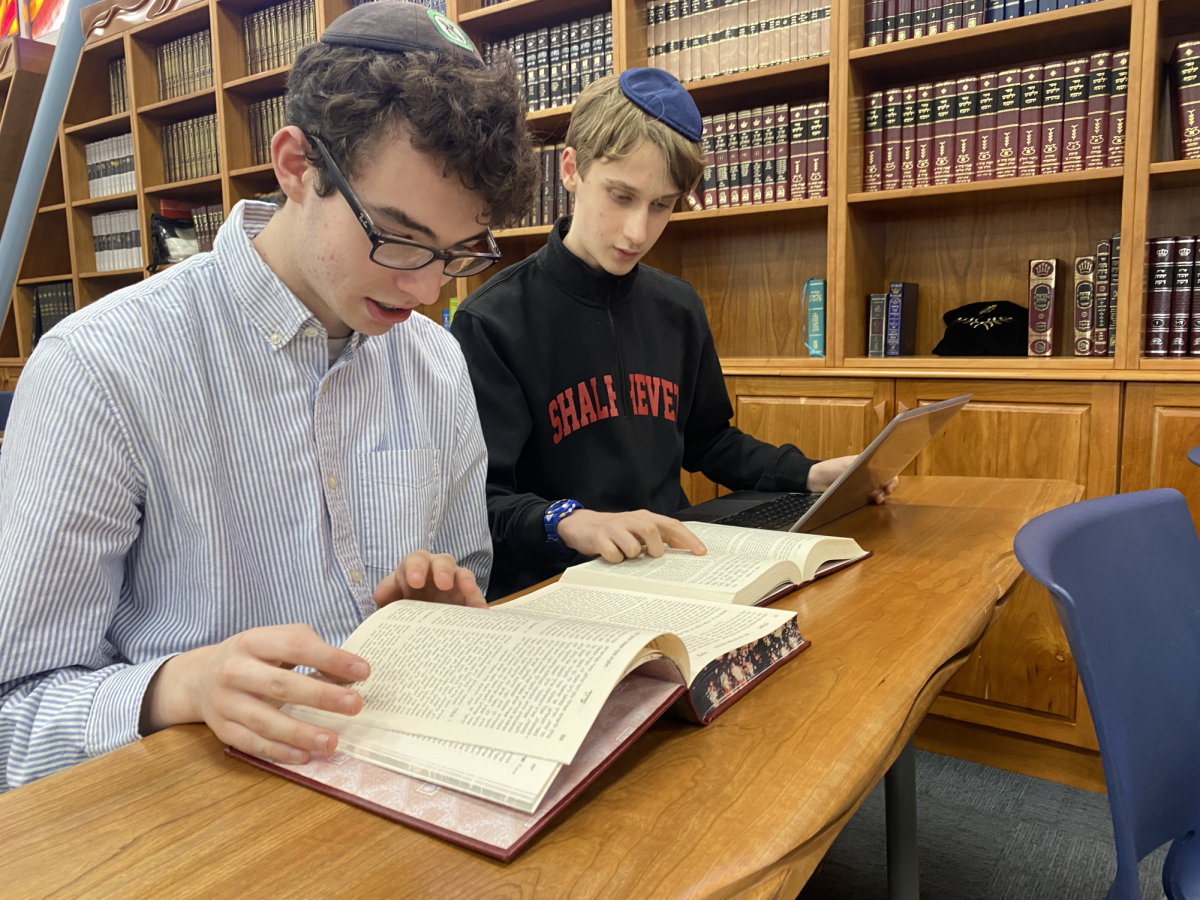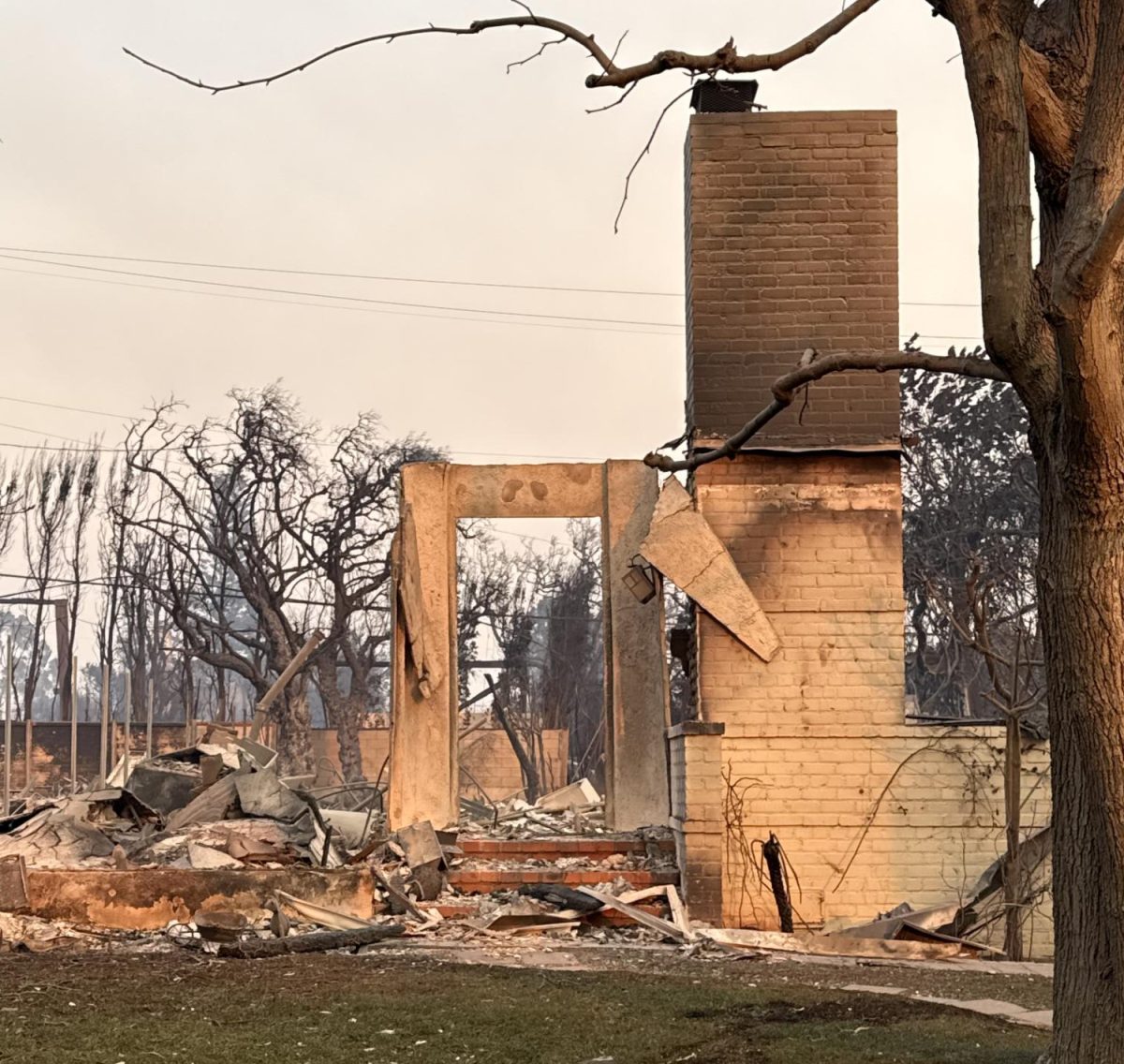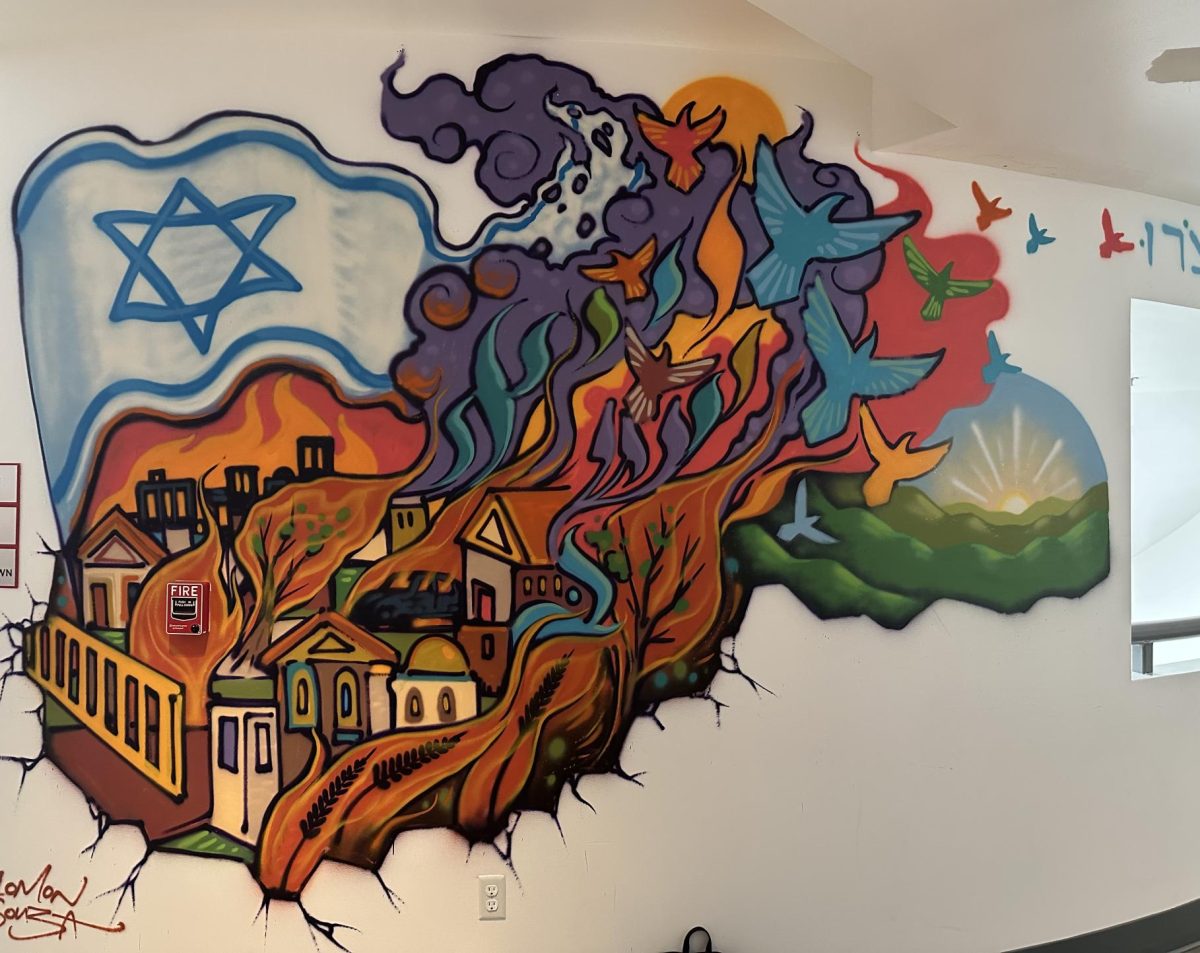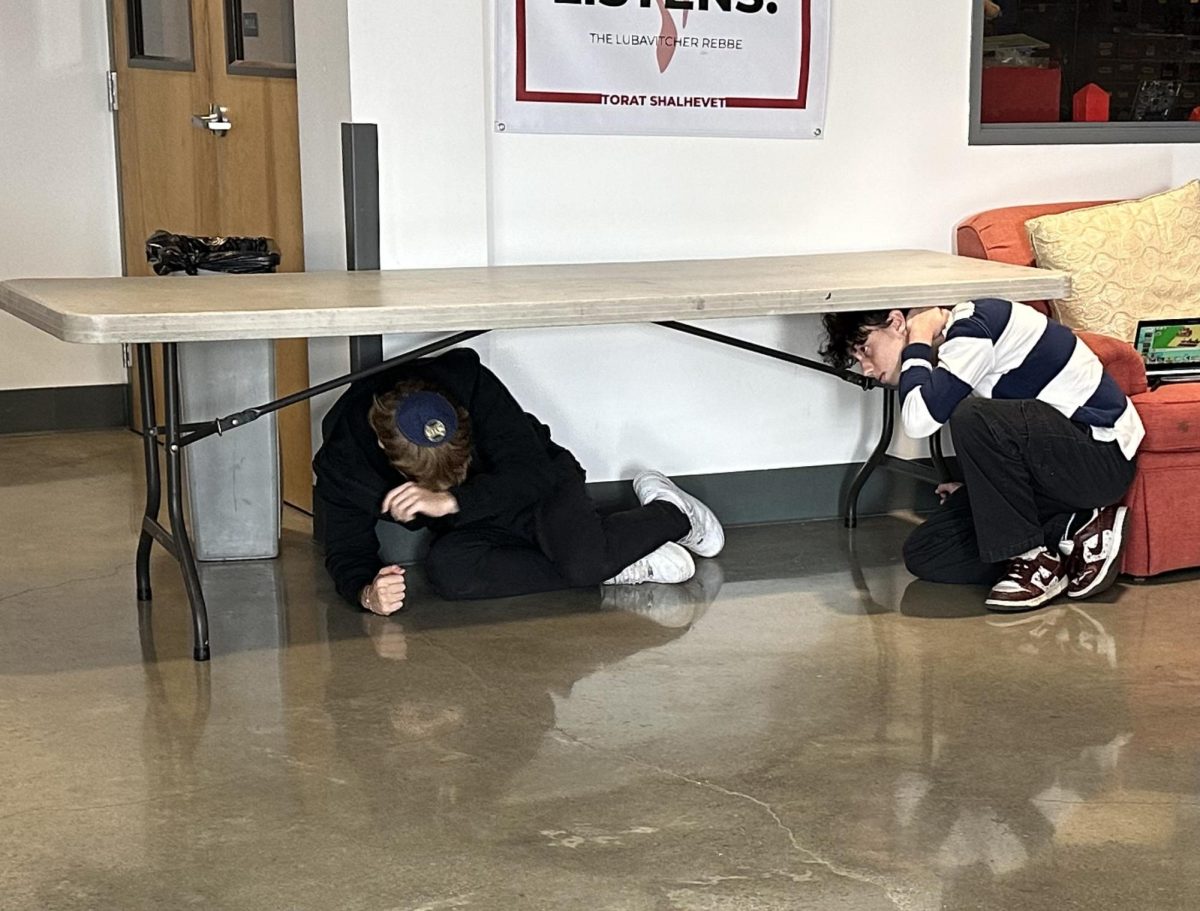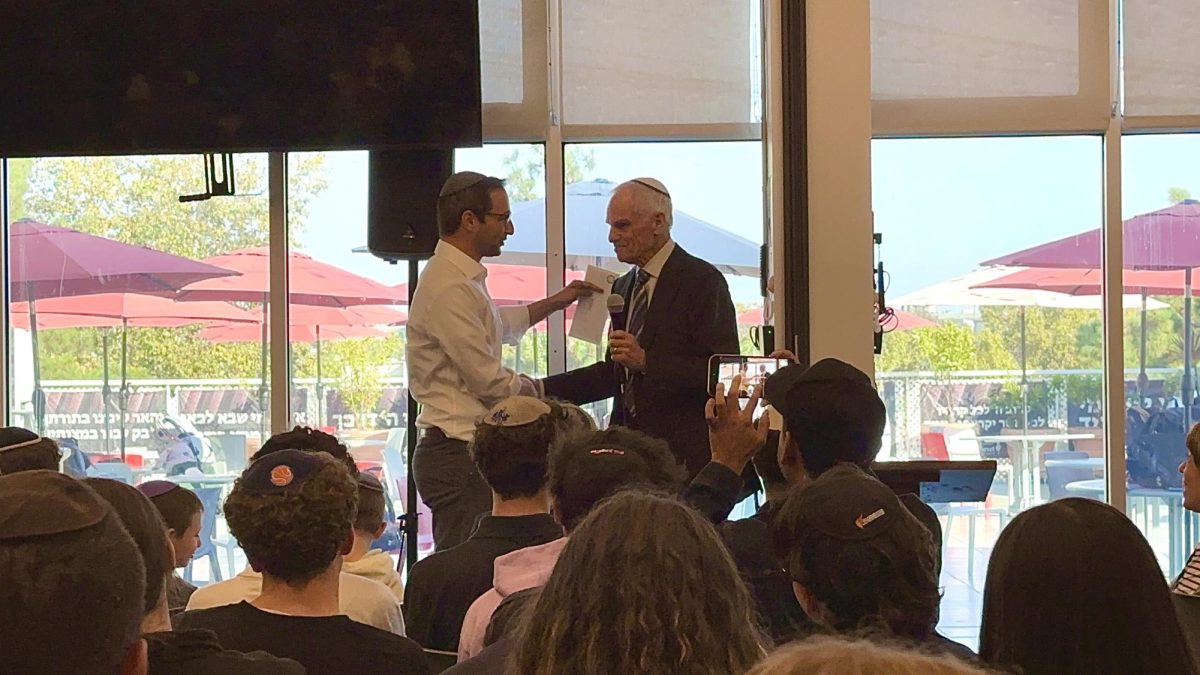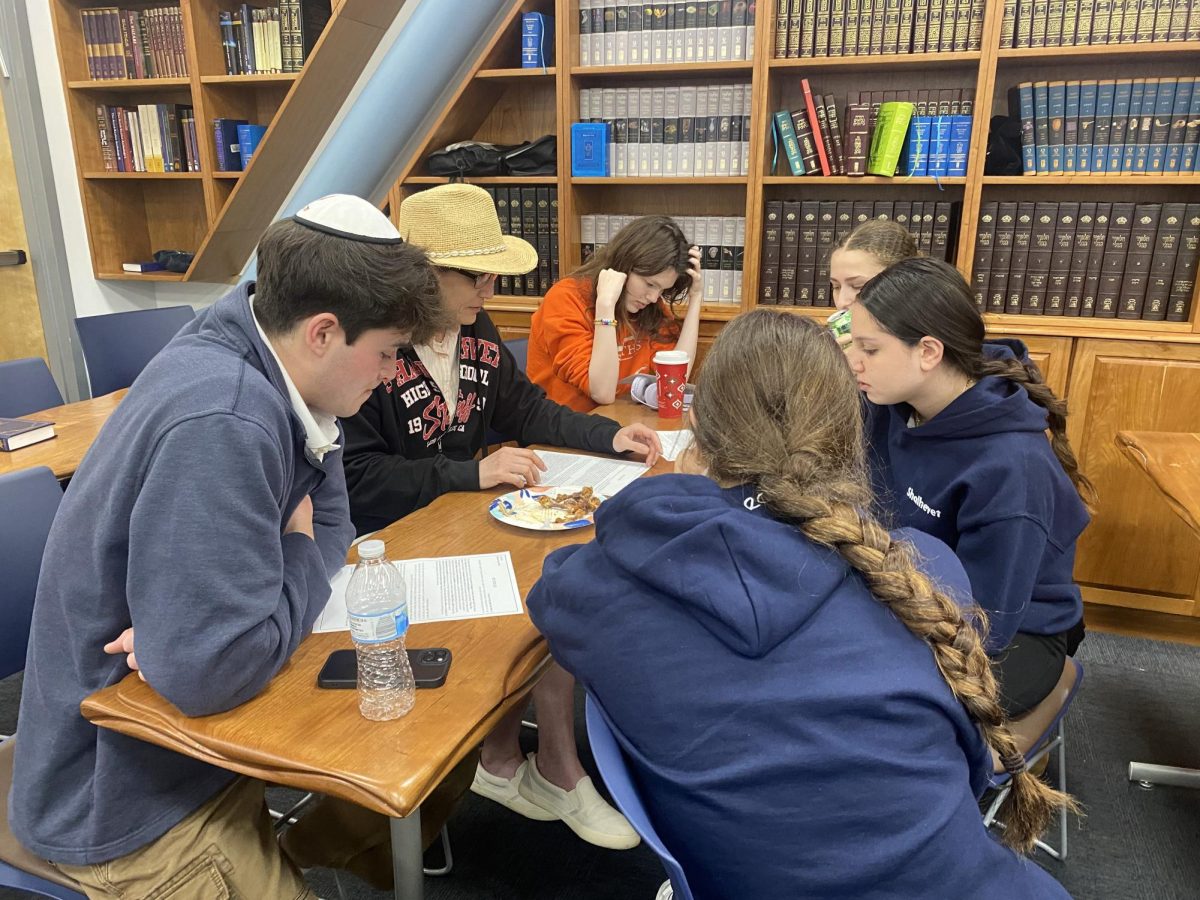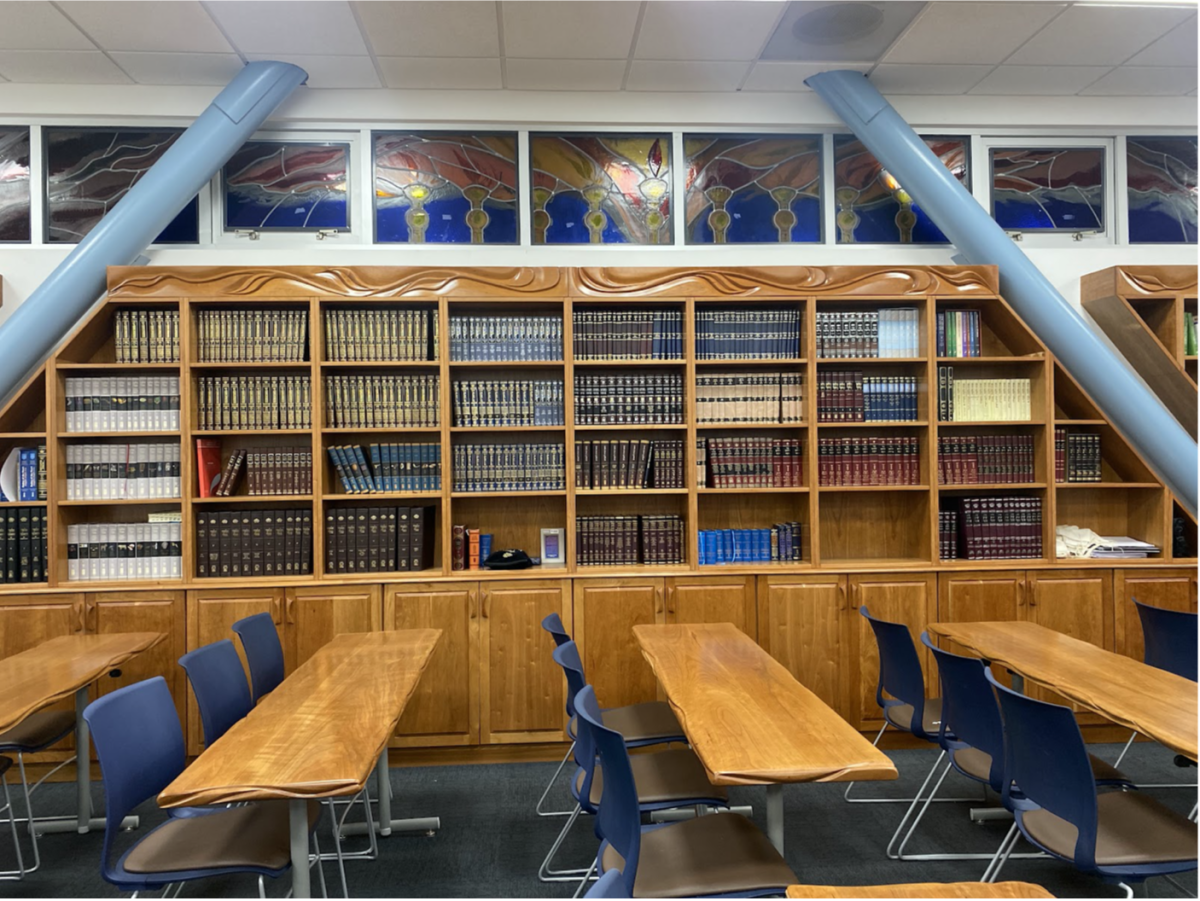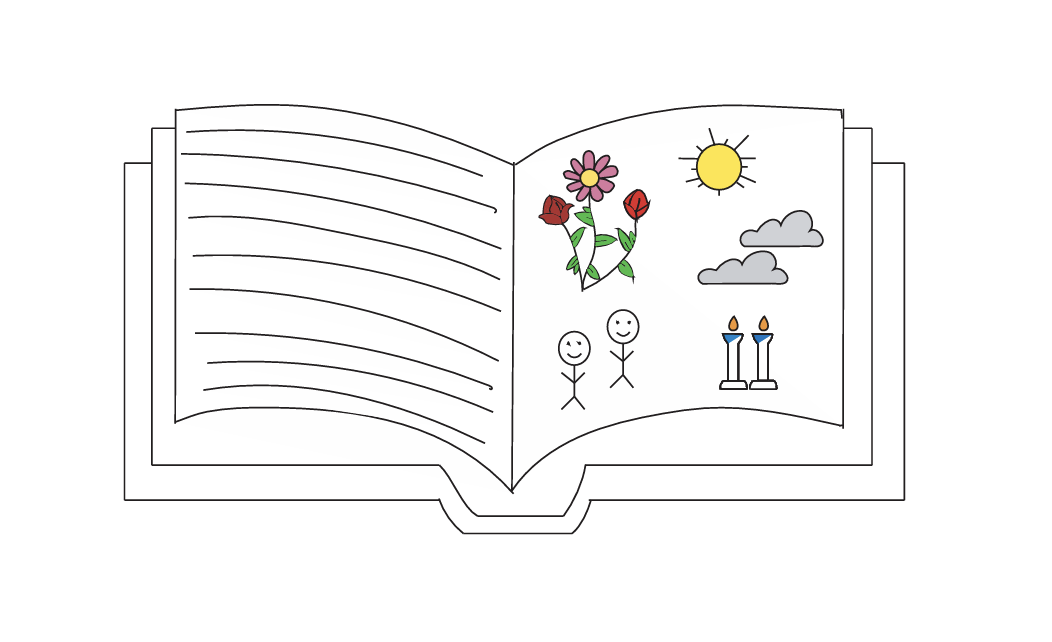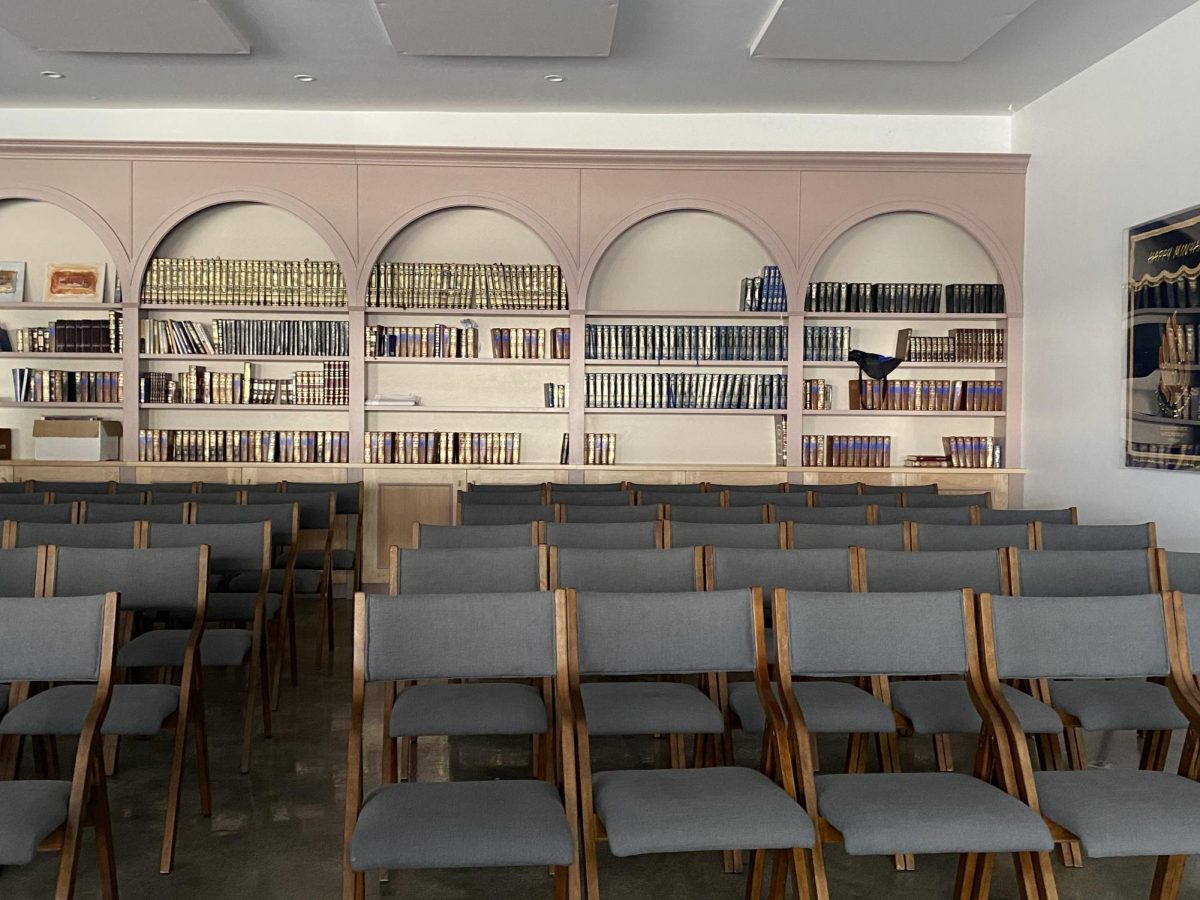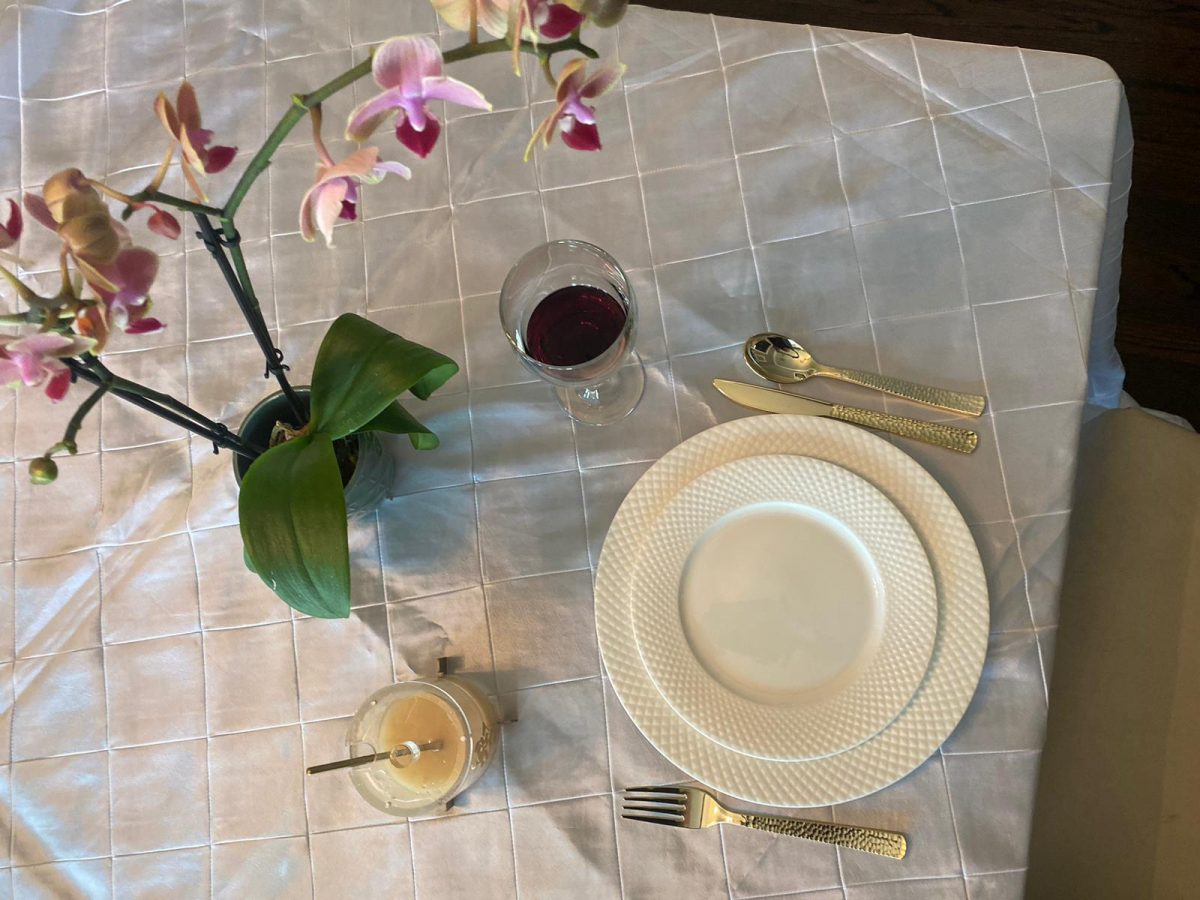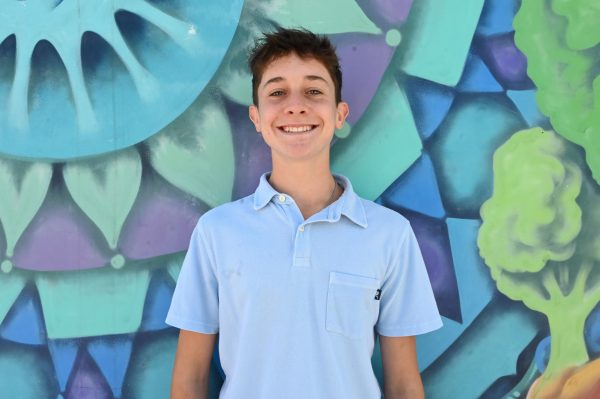Inspired by the Shalhevet Torah magazine Orot Shalhevet, written mostly by faculty and alumni writers, sophomores Etan Lerner and Ariel Mazar wanted a publication of their own.
“We saw that there wasn’t a consistent student-led publication of Torah, and thought it was important to have more opportunities for more divrei Torah to be put out,” said Ariel.
Etan planned on creating a brand-new publication called “Torat Chayim, or Torah of life.” But at that time, neither they nor most Shalhevet students knew that about 10 years earlier, then-sophomore Micah Gill ‘16 had had the same idea, and started a magazine called Nitozotzei Torah.
It was founded in 2014, and which stopped publishing when Micah became a senior and, according to Micah, found himself busy with college applications.
Judaic Studies teacher Rabbi Ari Schwarzberg told Etan about it and he decided, along with Ariel, to bring it back.
After brainstorming during the summer, the first edition of Nitzotzei Torah was released on Oct. 12 – to correspond with Parshat Bereshit, which is the first parshah (section) of the Torah. Etan and Ariel are co-editors-in-chief and Rabbi Schwarzberg is faculty adviser.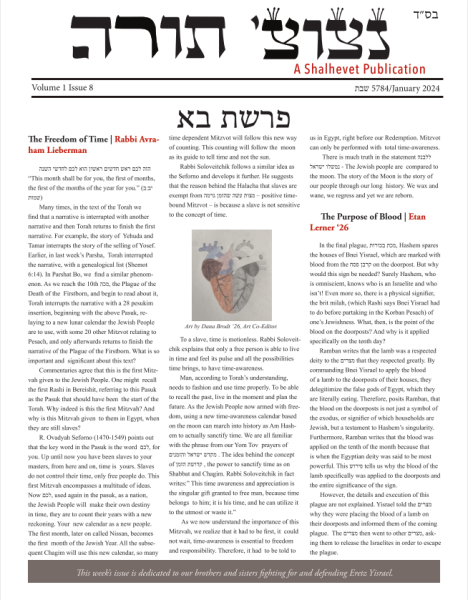
“In reading Nitzotzei Torah, you get to see everyone’s unique thoughts and interpretations of the parshah through their divrei Torah,” said Etan.
Etan said one of its strengths is having so many different students as writers, each bringing a unique perspective. He mentioned two students who’ve each written for Nitzotzei twice.
“What you’ll see from writers Yakov Liberman and Orly Berenson will be two completely different divrei Torah,” he said.
The new Nitzotzei Torah is a bi-monthly (twice per month), double-sided, one-page and student-led Torah publication. According to Rabbi Schwarzberg, in 2014 the name was chosen to relate the publication to the name of the school, Shalhevet – flame – and Nitzotzei Torah means sparks of Torah.
Rabbi Schwarzberg described two main goals for the new publication. As the external goal, he hopes it can be read by synagogue members across Los Angeles on Shabbat – while within the school, it will develop student abilities.
“The internal goal is to have Shalhevet students regularly engaging in the weekly parshah and developing an amazing skill which is learning how to think through and write an original dvar Torah,” said Rabbi Schwarzberg.
To accomplish their goals, Etan and Ariel, along with the help of Shalhevet rabbis, distribute the 140 copies throughout Shalhevet and to four synagogues – Beth Jacob, B’nai David, Young Israel of Century City, Knesset Israel and Westside. They are assisted by faculty members Rabbi Schwarzberg, Rabbi David Stein, Rabbi Eli Broner and Rabbi Yagil Tsaidi.
“The rabbis have been extremely helpful,” said Etan. “We simply wouldn’t be able to distribute Nitzotzei Torah to the larger Jewish community without them.”
Student writers said they’ve enjoyed the experience. Yonah Terech, a sophomore and two-time writer for Nitzotzei, says he enjoys that it is student-led.
“This feels different compared to things like Orot Shalhevet, as it feels more from the students,” said Yonah. “I’m happy to write for them and hope to write more in the future.”
Orly Berenson is in ninth grade and said she views it’s a way to both write and think.
“It’s a chance for me to learn something new, and to have others read and reflect on my views on the weekly parshah,” said Orly.
Yakov Liberman, a sophomore, said he was inspired by Etan and Ariel’s ambition in the writing process and dedication to its organization.
“They make sure to have the final draft of each dvar Torah a week in advance, and along with Rabbi Schwarzberg make countless edits and give feedback on each draft I submit to them,” said Yakov.
Yakov also thinks that the Nitzotzei Torah is an accurate representation of Shalhevet Torah learning and is able to represent the Shalhevet students’ dedication to Torah learning.
Micah Gill said he originally started Nitzotzei Torah for a simple reason: Shalhevet hadn’t had anything like it and there was no good reason for that. In Micah’s sophomore year, he discussed it with Rabbi Schwarzberg and other Judaic faculty and then took the lead role.
It died out during his senior year, Micah said, due to the workload of college applications. When speaking to Rabbi Schwarzberg this past November, he was made aware of the magazine’s new life.
“He mentioned that his 10th-grade students were talking about bringing it back,” said Micah in a January interview. “I then found one of the old copies and just got excited about it.”
He said the new version is visually very similar but published more often, and credited his former classmate Gabe Silverstein ’16, for its design.
“[Gabe is] super talented and was instrumental in getting it off the ground,” said Micah, who attended Yeshivat Hakotel after high school and is currently a law student at NYU.
Looking ahead, Etan and Ariel also hope to acquire a larger group of upperclassmen writers after college applications are complete, and to have each member of the Judaic studies staff contribute one piece by the time the school year ends.
To keep everything organized, they have created a spreadsheet for the year which details when the publication will come out and who will be writing for it. On average, they have three student writers per edition. They are also looking for sponsors or dedications for events such as bar mitzvahs, weddings and yahrzeits.
Etan and Ariel admitted to having numerous typos and grammatical errors in past editions and are working to prevent this in the future by working with Max Messinger, Copy Editor of the Boiling Point, to find more editors. Recently, they have added Eliana Vahedifar as an additional set of eyes to look over each edition.
They also hope to have more original student art in the future instead of using stock images from the internet. In past editions, graphics have been made by sophomores Dana Brodt and Shevy Gomperts.
And along with Rabbi Schwarzberg, the pair want to hold workshops to teach the underclass what makes a great dvar Torah.
Rabbi Schwarzberg thinks that Nitzotzei Torah is a few edits away from being perfect.
“Overall, it’s been very smooth,” Rabbi Schwarzberg said, “but like anything new, and this being completely student-run, it won’t be professional from the beginning and will take some to get to that level of professionalism.”
He specifically commended the sophomore class for stepping up to write when needed.
“That’s all of our goals as teachers, is for students on their own to fall in love with Torah learning,” said Rabbi Schwarzberg. “I just want to support their commitment and passion for Torah.”

